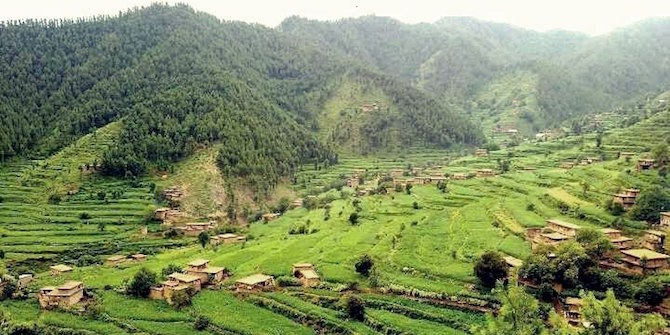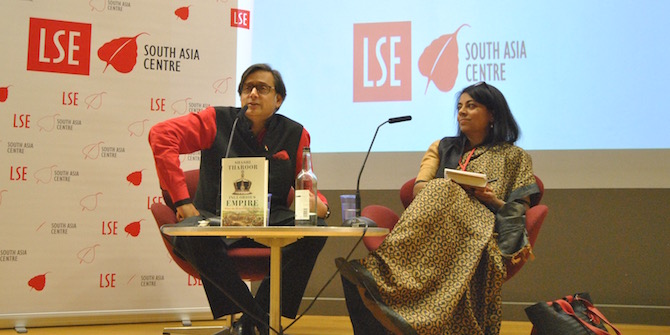 Christopher J. Lee examines the complex evolution of political solidarity between Asian and African countries in the sixty years since the 1955 Asian-African Conference in Bandung, Indonesia.
Christopher J. Lee examines the complex evolution of political solidarity between Asian and African countries in the sixty years since the 1955 Asian-African Conference in Bandung, Indonesia.
This year marks the sixtieth anniversary of the 1955 Asian-African Conference held in Bandung, Indonesia. Known informally as the Bandung conference or, in shorthand, simply as Bandung, this diplomatic meeting has experienced a surprising resurgence over the past decade as a symbolic moment of political solidarity between Asian and African countries during the early postcolonial period. Indeed, this Cold War moment has been invoked as a foundational event for historicising the recent emergence of the Global South—a provisional term referring to what used to be called the Third World, but with the rise of the BRICS (Brazil, Russia, India, China, and South Africa) group has come to represent something far different. The past year has witnessed several anniversary conferences and academic workshops on Bandung in Indonesia, the Netherlands, and Australia, with at least one more conference ahead in Bandung itself to be held at the Museum of the Asian-African Conference in late October. These diverse efforts have intended to outline future agendas in addition to commemorating the past. For example, the last week of September marked the inaugural Association of Asian Studies in Africa (A-Asia) Conference held in Accra—an intellectual endeavour that promises to establish Afro-Asian studies as a permanent field in its own right.
Revisiting Bandung this anniversary year has consequently served as a reminder of the significance of the 1955 meeting and its legacies—as well as its complexity. For some, the Bandung conference has accrued a near mythological quality about who was there, what was said, and what goals were achieved. Kwame Nkrumah of Ghana, Mao Tse-Tung of China, and Josip Broz Tito of Yugoslavia were not there, for example, despite a number of popular understandings. Nonalignment as a concept and political strategy was also not widely held at the time by those in attendance. It gained widespread public attention and depth only after the 1961 conference of non-aligned states held in Belgrade that formally established the Non-Aligned Movement (NAM). Indeed, amid the solidarity that was undoubtedly present at Bandung, there was also a heady mix of personal and nationalist ambitions that reinforced existing differences and tensions. North and South Vietnam, for example, sent delegations, both of which vocally criticised the other. Turkey, Iraq, Pakistan, and the Philippines, among other delegations, had already aligned themselves with the West in the preceding months through the Baghdad and Manila Pacts, a pair of security agreements pursued by the United States and its allies as part of the Truman Doctrine and its policy of containment. In fact, these agreements had served as catalysts for the Bandung meeting, as had concern with Southeast Asia generally following the departure of the French and the unsteady peace established by the 1954 Geneva Conference.
Still, despite these tensions and future uncertainties, Bandung served as an important step in the cultivation of Third World alliances. The so-called “Bandung Spirit”—with all the enthusiasm and elusiveness the expression itself conveys—has proved to be an enduring ethos, if one more intermittent than persistent in nature. As with most ideologies, Afro-Asianism has been subject to local understandings and redefinition over time, in the same way that the event of Bandung itself has been adapted as an idea and symbol. Beyond the NAM, other intercontinental efforts in the wake of Bandung include the Afro-Asian People’s Solidarity Organisation (AAPSO) based in Cairo and the Organisation of Solidarity with the People of Asia, Africa, and Latin America (OSPAAAL) based in Havana, in addition to the establishment of intra-continental institutions such the Organisation of African Unity (the African Union today). These other efforts did not necessarily emerge directly out of Bandung, but the 1955 Asian-African Conference did provide a significant example of the diplomatic possibilities available after decolonisation.
International meetings presented occasions for reinforcing sovereignty and building interstate networks of trust and community, drawing from and aggregating forms of capital—social, political, and economic alike—possessed by individual countries. Indeed, the rapid emergence of the conference format among newly independent countries after the Second World War can be understood through this lens. While diplomacy typically played a role in negotiating an end to colonialism in numerous cases, international conferences provided an alternative means of recognition and network building. Meetings like the 1947 Asian Relations Conference in Delhi, the 1953 and 1956 Asian Socialist Conferences in Rangoon and Mumbai, and the 1958 and 1960 All-African Peoples’ Conferences in Accra and Tunis, to offer a few more examples, enabled new patterns of political connection and solidarity among states and liberation movements during the early postcolonial period. The location of these international meetings in Asia and Africa strikingly indicated a new political geography that had emerged from the shadows of Western colonial rule. These diplomatic occasions must be recognised as taking place during a critical period of transition between colonial and postcolonial periods, amid a passing era of modern European imperialism and a new era of Cold War rivalry and intervention. They consequently transpired during a time of both existential uncertainty and opportunity, signaling attempts by countries in Asia and Africa to intervene in the global politics then taking shape.
The re-emergence of Bandung as a political symbol today can be understood on similar grounds. It has experienced revival during another time of transition and uncertainty when Asia-Africa relations have been surging forward to displace the United States and the European Union with China and India as the major players (and competitors) with their African counterparts, albeit through trade agreements and capital investment that contrast with the conditions and ideologies of 1955. As a consequence, the Bandung moment must neither be uncritically romanticised nor condemned to history. Rather, as witnessed at the conferences I have attended the past year, it serves as one vantage point among many for redrawing the academic geographies to which we have become accustomed, as well as reframing and historicising the emergent politics of the global present.
This article originally appeared 26 October on the Africa at LSE blog.
Note: This article gives the views of the author, and not the position of the South Asia @ LSE blog, nor of the London School of Economics. Please read our comments policy before posting.
About the Author
 Christopher J. Lee is the editor of Making a World after Empire: The Bandung Moment and Its Political Afterlives (2010) and the author of Unreasonable Histories: Nativism, Multiracial Lives, and the Genealogical Imagination in British Africa (2014) and Frantz Fanon: Toward a Revolutionary Humanism(2015). He is based at the University of the Witwatersrand, Johannesburg.
Christopher J. Lee is the editor of Making a World after Empire: The Bandung Moment and Its Political Afterlives (2010) and the author of Unreasonable Histories: Nativism, Multiracial Lives, and the Genealogical Imagination in British Africa (2014) and Frantz Fanon: Toward a Revolutionary Humanism(2015). He is based at the University of the Witwatersrand, Johannesburg.








